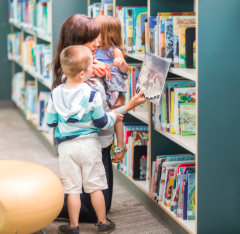A literacy-rich environment in preschool lays the foundation for lifelong learning and communication. It nurtures young children’s curiosity about language and helps them build early reading and writing skills in a natural, engaging way. By incorporating books, print materials, storytelling, and interactive play, educators can create a space that supports literacy development across all areas of learning.
What Is a Literacy-Rich Environment?
A literacy-rich environment surrounds children with opportunities to see, hear, and interact with language. This includes a variety of age-appropriate books, labels on classroom items, charts, story corners, and writing materials that are always within reach. These tools help children make connections between spoken and written language, encouraging them to explore reading and writing in fun and meaningful ways.
Benefits of a Literacy-Rich Preschool Setting
When children are consistently exposed to language through books, conversations, and playful activities, they develop stronger vocabulary, better comprehension, and improved listening skills. A print-rich classroom also boosts children’s confidence as they begin to recognize letters, words, and eventually sentences. These experiences promote early literacy, which plays a crucial role in future academic success.
Key Features of a Literacy-Rich Classroom
-
Accessible Books: Books should be displayed at children’s eye level and include a mix of fiction, nonfiction, poetry, and culturally diverse stories. Rotate them often to maintain interest.
-
Labeled Spaces: Use simple labels with both words and pictures to name shelves, centers, and everyday objects. This helps children associate printed words with real-world items.
-
Writing Opportunities: Provide materials like crayons, markers, paper, and clipboards in different classroom areas. Encourage children to draw, scribble, or write their names during play.
-
Interactive Read-Alouds: Daily storytime that includes discussion and participation builds comprehension and love for reading.
-
Environmental Print: Include familiar print such as cereal boxes, menus, or signs to show how print is used in everyday life.
Encouraging Family Involvement
Families play a key role in supporting literacy development. Teachers can invite parents to share books from home, attend reading days, or participate in classroom storytelling. Sending home book bags or newsletters with tips for reading aloud helps build a strong home-school connection.
Conclusion
Creating a literacy-rich preschool environment goes beyond simply having books on a shelf. It means intentionally weaving language, print, and storytelling into the daily rhythm of classroom life. With thoughtful planning and a welcoming approach, educators can inspire a love of reading and language that children will carry with them into the future.


